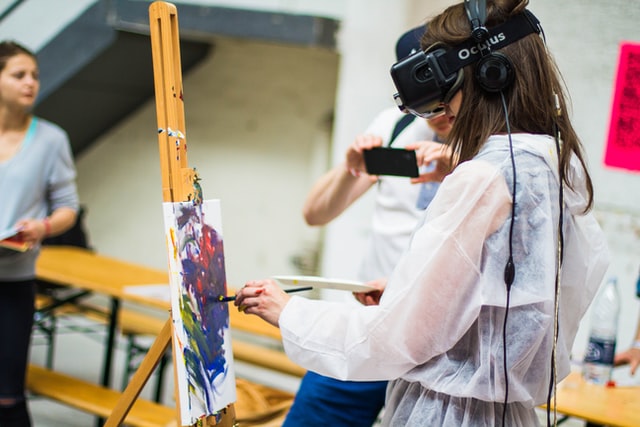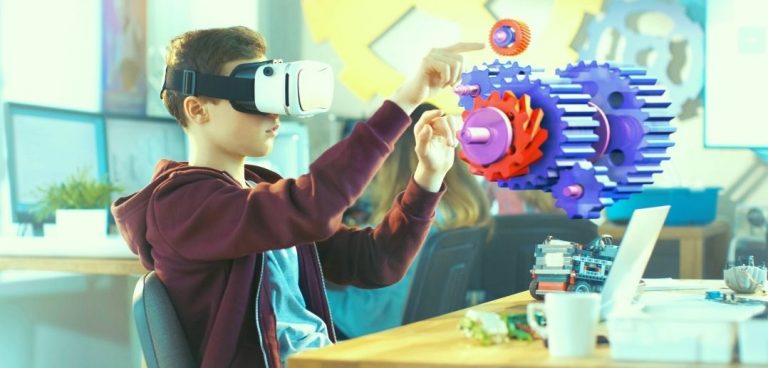Classrooms all over the world are using more and more technology in their setup. Futuristic learning may be shaped by tech, and inventions such as VR or AR may become students’ daily routine! Pen and paper learning will be a thing of the past, and phones, tablets, and laptops will shape the new education process.
Students and teachers can both enjoy this expansion. It makes abstract concepts more accessible for learners to grasp. And for teachers, it helps them explain things using visual aids, engaging content, and exciting stories.
Implementing phones, quizzes, and all sorts of different websites can help ease the students’ load and help them study easier and faster. Here’s an example – modern studying wouldn’t be the same without this college homework helper and similar tools! It offers affordable 24/7 homework support with more than ten subjects, including Math, Physics, and Programming! Make sure to check it out; it means professional homework help and more free time for you and your goals!
Now, let’s see eight different technologies making their way to classrooms – all over the world!
1. AR
Augmented reality (AR) will shape future classrooms. AR headsets can provide students with a richer account of the world and new learning opportunities. They can also help teachers improve their lesson plans by giving them objectives or marking lessons in different formats.
AR could also make learning more fun — and more engaging for students and teachers alike! Although AR has been around for some time, it’s only recently begun to make its way into classrooms. Now teachers have more options than ever before when it comes to giving their students the experience they’ll enjoy and benefit from!
How would it work? Augmented reality headsets will allow teachers to place figures, text, and videos into the augmented world to help students grasp new ideas. It could also help students who have sensory issues, or are visual learners, to immerse themselves in a particular environment – and practice engaging with that environment more deeply!

2. Social media for students
Social media is altering the future of education! More and more scholars socialize online, exchange ideas, participate in online clubs, and even vote on which topics they want to see covered in their classrooms.
In almost every classroom these days, students communicate using some social media app. While some content is exclusive to a specific website or service, many products shared amongst students are open source or available on the internet to check out.
These sites provide an opportunity to study technology through a collaborative experience! The ability of students to connect and share ideas via the internet creates a strong motivation for them to grasp more about a subject or topic that they are passionate about.
Students that use these sites tend to be more engaged in their studies because they have an opportunity to present their thoughts to others and learn from the different viewpoints out there!
3. 3D printing
When it comes to the future of education, the possibilities seem to be endless. But with so many technologies promising – and already having – a transformational impact on how we learn and teach, it can be challenging to know where to start! With 3D printing, one technology is already making its way to the classroom–and it may just change the way we comprehend forever.
3D printing is an incredible technology that is being used by schools and educators around the world. It offers an alternative to traditional classroom materials, which can revolutionize learning. 3D printing is a process where a solid model is created using a mixture of materials, and then layers upon layers of different materials are added to create a three-dimensional object.
Here are some benefits of implementing 3D technology in modern classrooms:
- Experimenting with design
- Learning through show and tell
- Creating engaging studying equipment
- Exploring technology
- Teaching in an exciting environment
 4. Gadgets for everything
4. Gadgets for everything
There’s a good chance that your classroom will be packed with kids wearing smart bands or watches and carrying around devices that look like they’re from the far future. What if these gadgets weren’t just toys – but also teaching tools?
That’s the future of educational technology, and it’s happening already! It will be interesting to see if this change inspires parents to do more than allow their kids to play with these devices and teach them valuable skills in the process.
Students of the future will utilize a wide array of new technology tools. Some examples include video conferencing, gaming consoles, education software, cloud computing, online social networking, and even wearable computing devices. Not only will these devices increase the quality of teaching and learning, but they will also enable radical improvement in student engagement.
In most cases, these devices won’t replace the traditional classroom experience but enhance it. They’ll allow pupils to take control of their learning and teachers to engage them in ways they’ve never been before – and directly stimulate their thinking!
5. Learning through games
Using game-based learning techniques, including real-time simulation and interaction, to teach concepts is quickly becoming one of the best uses of modern technology in schools and colleges! The goal of these games is to reduce the time students spend taking notes, take problem-solving exercises, and do other activities that are time-consuming.
In that way, teachers can significantly expand a student’s capacity for absorption and retention of knowledge when compared to traditional methods. The promise of game-based learning is that pupils will absorb better when their focus is on an activity, not on memorization or time management errands!
6. Libraries – in the cloud
A future school might have an entire collection of ebooks available for learning; a student would simply need to log into their account and access the books they need. In some ways, this is already happening with some digital materials.
As technology continues to advance and become more ubiquitous, these digital libraries will become more valuable to everyone – particularly parents whose students may lack access to traditional libraries due to cost or other similar restrictions. This is the future of digital education! With mobile devices becoming a primary computing resource for students, libraries are beginning to be considered more than just physical locations.
School libraries around the world are beginning to realize that digital technology can improve the experience for pupils (and their instructors) while helping to eliminate print-related costs. It’s a win-win scenario!
Learning digitally
These are just some of the ways classrooms could be advanced using technology. There are many other ideas, such as bendable paper-thin gadgets, flexible displays, and biometrics, to name a few!
We aren’t sure how many of those will be used successfully in learning and teaching. Still, one thing is certain – tech is slowly but surely transforming the way we gather, process, and output information. It’s a learning revolution!
